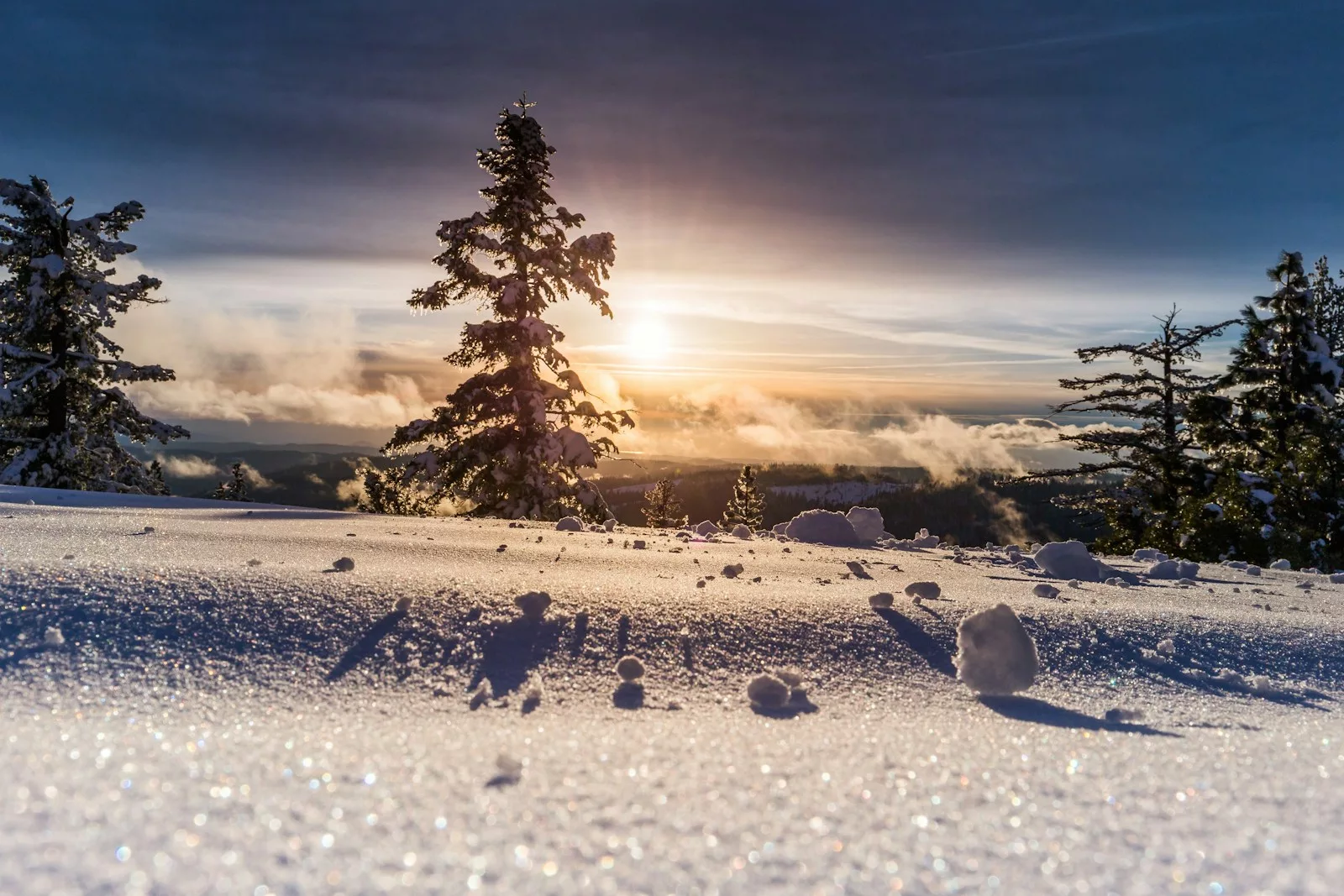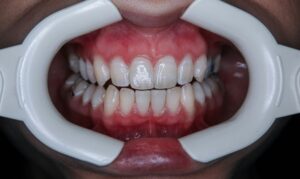Sunburn is often associated with warm, sunny days spent on the beach or by the pool. This has led many people to believe that sunburn is not a concern during colder months or in chilly climates. However, the temperature outside has little to do with the ultraviolet (UV) radiation that causes sunburn. Even on cold, cloudy, or snowy days, UV rays can penetrate the skin and cause damage. The idea that cooler weather provides protection from the sun’s harmful rays is a common misconception that can leave individuals vulnerable to unexpected sunburns.
In this article, we will explore the factors that contribute to sunburn in cold weather, examining how UV radiation operates independently of temperature. We will also discuss specific conditions—such as high altitudes, snow reflection, and cloudy skies—that make sunburn more likely in cold climates. Finally, we’ll offer practical advice for protecting your skin year-round, regardless of the weather.
Understanding UV Radiation: Why Temperature Doesn’t Matter
The Role of UV Radiation in Sunburn
Sunburn occurs when the skin is overexposed to UV radiation, a type of electromagnetic energy emitted by the sun. UV radiation is divided into three types:
- UVA rays: These rays have the longest wavelength and penetrate deep into the skin. They are associated with premature aging and long-term skin damage.
- UVB rays: These rays have a shorter wavelength and are primarily responsible for causing sunburn. They damage the outer layers of the skin and directly harm DNA, increasing the risk of skin cancer.
- UVC rays: These rays are the most harmful, but they are almost entirely absorbed by the Earth’s atmosphere and do not contribute to sunburn.
Unlike temperature, which fluctuates with the seasons and weather conditions, the amount of UV radiation reaching the Earth’s surface depends on factors such as the time of day, altitude, latitude, and cloud cover. Because UV radiation is not affected by temperature, you can still get sunburned even when it’s cold outside.
Seasonal Variations in UV Intensity
While UV radiation is stronger during the summer months, it does not disappear in winter. The Earth’s tilt affects the angle at which sunlight reaches different parts of the planet, causing variations in UV intensity throughout the year. For example:
- Summer: The sun is higher in the sky, and UV rays strike the Earth more directly, making them more intense.
- Winter: The sun is lower in the sky, and UV rays reach the Earth at a more oblique angle. While this reduces overall UV intensity, significant exposure is still possible, especially under certain conditions.
Even during the winter, UV radiation can cause sunburn, particularly if other factors, such as reflection from snow or increased altitude, amplify its effects.
Factors That Increase Sunburn Risk in Cold Weather
Snow Reflection: The Double Dose of UV Rays
Snow is highly reflective, with the ability to reflect up to 80% of UV rays. This means that UV radiation can reach your skin not only directly from the sun but also from sunlight reflected off the snow. This phenomenon effectively doubles your UV exposure, increasing the likelihood of sunburn even on a cold day.
This is particularly problematic in activities like skiing, snowboarding, or hiking in snowy conditions, where prolonged exposure to reflected UV rays can lead to sunburn on exposed areas like the face, neck, and hands. Reflection from ice and water can also contribute to UV exposure, further emphasizing the need for sun protection in cold climates.
High Altitude: Closer to the Sun
UV radiation becomes stronger at higher altitudes because there is less atmosphere to filter out harmful rays. For every 1,000 meters (3,280 feet) increase in altitude, UV levels rise by approximately 10-12%. This makes high-altitude locations, such as mountain ranges, particularly dangerous for sunburn, even in cold weather.
Skiers, climbers, and outdoor enthusiasts in mountainous regions are at an elevated risk of sunburn because they are closer to the sun and more exposed to unfiltered UV rays. The combination of high altitude and snow reflection creates a perfect storm for UV damage, making sunscreen and protective clothing essential for anyone spending time in these environments.
Cloudy Skies: The Hidden Danger of UV Radiation
Many people assume that cloudy weather eliminates the risk of sunburn, but this is a misconception. While thick clouds can block some UV radiation, up to 80% of UV rays can penetrate thin or scattered clouds. This is known as the “cloud effect,” where the sun’s rays diffuse through the clouds, leading to unexpected UV exposure.
Cold, overcast days often give a false sense of security, leading people to forgo sunscreen or other protective measures. However, the skin can still absorb UV radiation, especially during extended periods outdoors, making it crucial to remain vigilant about sun protection even when the sun isn’t visible.
Prolonged Outdoor Activities in Winter
Winter activities such as skiing, snowboarding, hiking, and ice fishing often involve prolonged exposure to UV radiation. Unlike summer, when the heat may remind you to seek shade, the cold temperatures of winter can mask the sensation of sun exposure, making it easier to underestimate the risk of sunburn. Additionally, wearing inadequate protection for long periods can result in severe sunburns, particularly on the face, ears, and hands.
The Skin’s Response to UV Radiation in Cold Weather
How Sunburn Occurs
Sunburn is the result of UVB radiation damaging the DNA in skin cells. When UVB rays penetrate the epidermis (the outer layer of the skin), they cause mutations in the DNA, triggering an inflammatory response. This response involves:
- Dilated blood vessels: To repair the damage, the body increases blood flow to the affected area, causing the redness associated with sunburn (erythema).
- Release of cytokines: Damaged cells release signaling molecules, such as cytokines, which attract immune cells to the site of injury and amplify inflammation.
- Apoptosis: Severely damaged skin cells undergo programmed cell death, leading to peeling as the body sheds these cells to prevent further harm.
Even in cold weather, this process occurs when UV radiation overwhelms the skin’s natural defenses, leading to the same painful and damaging effects as a summer sunburn.
Cold Weather Challenges for the Skin
Cold weather itself can exacerbate the effects of sunburn. The skin is often drier and more sensitive in winter due to lower humidity and exposure to cold winds. When sunburn occurs in these conditions, it can cause additional irritation and slow the healing process. Dry, chapped skin is less resilient and more prone to cracking, which can increase discomfort and leave the skin vulnerable to infection.
Protecting Your Skin in Cold Weather
Sunscreen: A Year-Round Essential
Sunscreen is not just for summer—it is a critical part of year-round skin protection. Here are some tips for using sunscreen effectively in cold weather:
- Choose a broad-spectrum sunscreen with an SPF of 30 or higher to protect against both UVA and UVB rays.
- Apply sunscreen to all exposed skin, including the face, ears, neck, and hands.
- Reapply sunscreen every two hours, especially if you are sweating or in snowy conditions where reflection amplifies UV exposure.
- Use a lip balm with SPF to protect your lips, which are particularly vulnerable to sunburn.
Protective Clothing and Accessories
In addition to sunscreen, wearing protective clothing can help reduce UV exposure:
- Hats: A wide-brimmed hat or a beanie with a visor can shield your face from direct sunlight.
- Gloves: Gloves protect your hands from both the cold and UV rays.
- Ski goggles or sunglasses: Choose eyewear with UV protection to shield your eyes and the delicate skin around them from both direct sunlight and reflected rays.
- UPF clothing: Wear clothing with an Ultraviolet Protection Factor (UPF) rating for added protection against UV radiation.
Timing and Shade
To minimize UV exposure in cold weather:
- Avoid outdoor activities during peak UV hours, typically between 10 a.m. and 4 p.m..
- Seek shade whenever possible, even in snowy or mountainous areas.
- Be mindful of UV intensity at higher altitudes and take extra precautions.
Hydration and Skincare
Cold weather and sunburn can dehydrate the skin, so maintaining proper hydration is essential:
- Drink plenty of water to keep your skin hydrated from within.
- Use a moisturizer to combat dryness and strengthen the skin’s barrier.
- Apply aloe vera or other soothing products to sunburned skin to reduce inflammation and promote healing.
Long-Term Consequences of Cold-Weather Sunburn
Premature Aging and Photoaging
Repeated UV exposure, even in cold weather, contributes to photoaging, the premature aging of the skin caused by sun damage. Photoaging manifests as wrinkles, fine lines, pigmentation changes, and a loss of skin elasticity, all of which can occur regardless of the season.
Increased Risk of Skin Cancer
Cold-weather sunburns, like summer sunburns, increase the risk of skin cancer. Each instance of sunburn causes DNA damage in skin cells, and repeated exposure without adequate protection can lead to mutations that result in basal cell carcinoma, squamous cell carcinoma, or melanoma.
Ocular Damage
Exposure to UV rays reflected off snow can harm the eyes, leading to photokeratitis, a painful condition similar to sunburn on the cornea. This condition, also known as “snow blindness,” highlights the importance of wearing UV-protective eyewear in snowy conditions.
Conclusion: Sun Safety in Every Season
Sunburn is not limited to warm, sunny days—it can occur in cold weather, snowy landscapes, and cloudy conditions. Understanding that UV radiation operates independently of temperature is key to protecting your skin year-round. By taking proactive measures, such as wearing sunscreen, using protective clothing, and avoiding peak UV hours, you can reduce your risk of sunburn and its long-term consequences.
Cold weather should not lull you into a false sense of security when it comes to sun exposure. Whether skiing down a mountain or taking a winter hike, remember that UV radiation is present and capable of causing harm. Embracing sun safety as a year-round habit will help preserve your skin’s health and minimize the risks associated with UV damage, no matter the season or climate.




